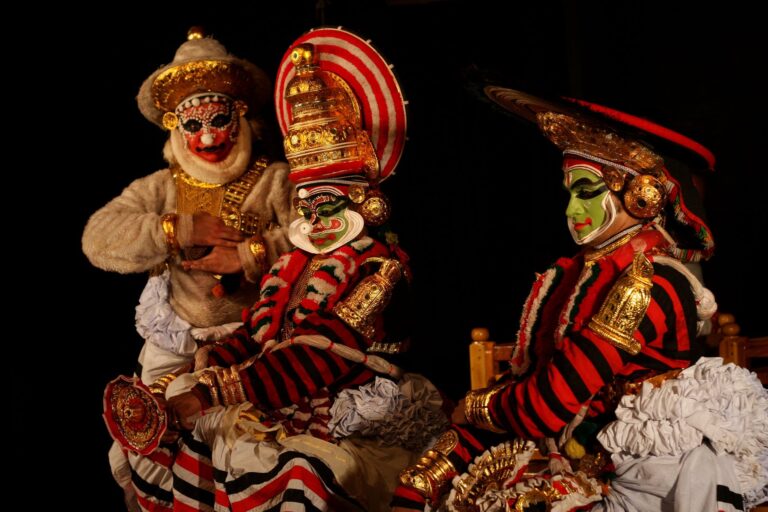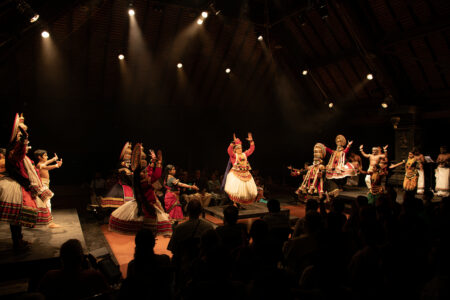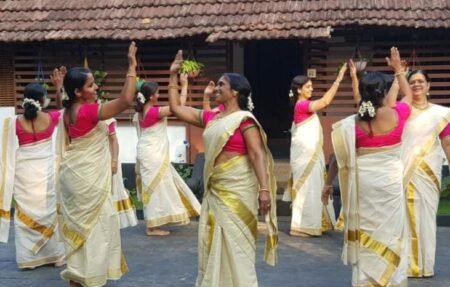How KP Narayana Pisharody’s Malayalam translation of Natya shastra rejuvenated the performing art forms of Kerala.
Bharata Muni’s Natya Shastra, the age-old Sanskrit treatise and handbook on Dramaturgy, has a pan-Indian appeal. However, only over the past seven decades, Natya Shashra was made to correlate to the varied regional classical performing arts of the country. In Kerala, this was only possible, thanks to the translation of the book to Malayalam by the late Sanskrit scholar KP Narayana Pisharody. Admittedly, the momentous task of translation has helped immensely in the renaissance of Kerala art forms: Kathakali, Koodiyattam and Mohiniyattam.
The year 2021 is the golden jubilee year of this immortal work, ‘Natya Shastram’. Several cultural outfits in the state currently are planning to celebrate the occasion.
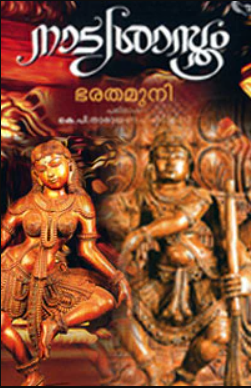
In the past, the system of training was solely through the transmission of performance techniques from the teacher to the students. The students were just asked to reproduce what the guru demonstrated; there was no reference to the theoretical aspects. Nor were they encouraged to pursue it. This was the system followed by Kerala Kalamandalam and the few gurukulas of Koodiyattam for that matter. True, this served to produce performers but their knowledge of the sastra was dismally poor.
During the first part of the last century, Kodungallur Palace was a veritable university. Only after arriving there, the doyen of Kathakali Pattikkamthodi Ramunni Menon had a tryst with Natya Shastra for the first time in his life.
Notwithstanding the 11 years of rigorous training under his guru Ittirarissa Menon, the maestro’s mukhabhinaya(facial acting) left much to be desired though his movements were commendable. Under Bhagavathar Kunjunni Thampuran he was initiated into Natya Shastra and the technique of delineating satwika abhinaya etc according to the Rasa Siddhartha of Natya shastra. In its dedicated section on rasa, the Natya Shastra discusses eight primary rasas.
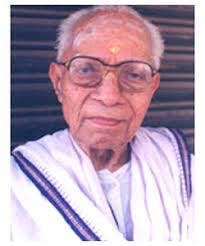
These transformed him into an accomplished artiste, well versed in both theory and practice. So when he joined the faculty of Kalamandalam later, he introduced certain slokas from the book in the syllabus of the Kathakali course. Later Mani Madhava Chakyar, himself a scholar of Sanskrit, and Ammannur Madhava Chakyar graduated from Kodungallur.
A translation at its best
Realising the inevitability of learning Natya shastra by students of classical art forms, Mukunda Raja, the erstwhile companion of Vallathol during the formation of Kalamandalam, requested Kerala Sahithya Akademi to bring out a Malayalam translation of Natya shastra so that the book would be accessible to both students and teachers of various art forms.
That was in 1963. Akademi acceded to the request and its first choice was Subbharamapattar who could not take up this onerous task. So naturally, the institution turned to Narayana Pisharody, who was teaching Sanskrit at Sree Kerala Varma College, Thrissur.
Pisharody had his own inhibitions and he consulted his guru Aattoor Krishna Pisharody who encouraged him to take up the assignment. But it has to be done by keeping the metre of the slokas intact and bringing out the meaning of the roots, he had insisted. Aattoor had a copy of Natya Shastra in palm leaves. He was fully satisfied with the translation of the first chapter and asked his disciple to continue on the same lines.
The first volume of 14 chapters in Malayalam appeared in 1971, which was published by the Akademi. Within days, all the copies were sold out. The work was completed in 1984 and Akademi published the entire corpus, 6,000 slokas spread over 36 chapters, in two volumes.
Commendable was the work since the slokas in the same metre were composed by the translator apart from the textual meaning. Further, Pisharody composed the Malayalam equivalents of the slokas which enabled the readers to memorise the slokas easily.
That was an epochal moment in the annals of the cultural landscape of Kerala. Natya shastra in Malayalam percolated into the artiste fraternity – performers, teachers, students – and even among the connoisseurs. There was hardly anyone who did not procure a copy.
According to KG Paulose, Sanskrit scholar and the first Vice-Chancellor of Kalamandalam University, the gulf between practice and theory was bridged for the first time thanks to the translation and the solid sastric foundation for Kathakali, Koodiyattam and Mohiniyattam could be established.
He also pointed out that the process of classicization which the art forms underwent in the last century could be attributed to this work. One can see how similar attempts to correlate the performing arts of other states also took place during this period.
Assimilating in Koodiyattam
Paulose was instrumental in bringing out an English translation of Natankusha, a critique on Koodiyattam by an anonymous author in the 15th century. The author had lampooned the Chakyar community for grossly violating the tenets of Natya shastra especially in plays like Anguliyankam and Mantrankam.
According to Paulose, it was the Sanskrit scholar K Kunjunni Raja who had observed that but for the knowledge of Natya shastra, the celebrity Painkulam Rama Chakyar could never have ventured to edit the play Bhagvadajjukam of Bodhayana to be staged in five hours, a ground-breaking event in the history of Koodiyattam. The play used to be completed in 35 days before this innovative attempt.
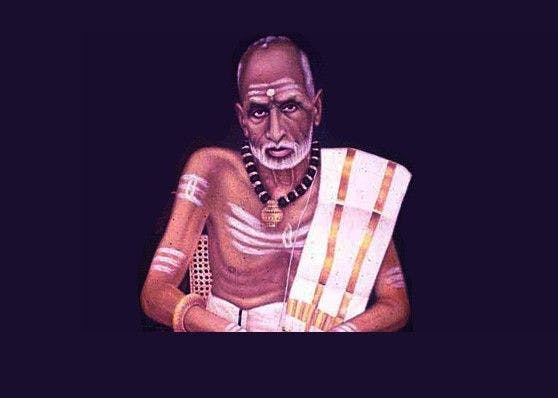
Pisharody was a disciple of the revered guru Punnassery Neelakanta Sharma and had worked in many institutions even outside Kerala as a widely accepted Acharya of Sanskrit. His students were a legion many among whom made a beeline at ‘Narayaneeyam”, his residence in Thrissur for enlightenment. Worthwhile to mention a few in this connection are ER Krishna Sharma, MS Menon, Yusuf Ali Kechery, KP Sankaran, VS Sharma, MK Menon (Vilasini), EI Warrier, MN Palur, Elamkulam Kunjan Pillai, LS Rajagopalan, Kovilan, NN Kakkad, KG Paulose and PC Muralimadhavan.
Small wonder, Pisharody was a name to reckon with in the pantheon of Sanskrit Acharyas of the country. Among the innumerable accolades, he had won at the national level are President of India’s award, Sangeet Natak Akademi, Lal Bahadur Sastri Sanskrit University, Delhi, apart from those from institutions such as Kerala Sahithya Akademi, Kerala Kalamandalam, Sree Sankaracharya University, Kalady, Guruvayur Devaswom and to crown them all the much-coveted Ezhuthachan Puraskaram of the Government of Kerala.
Narayana Pisharody passed away at the age of 95 in 2004.

